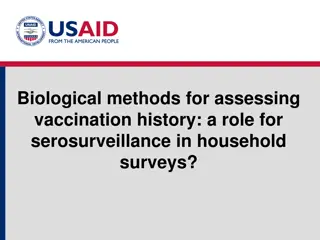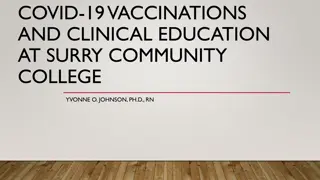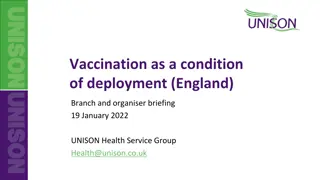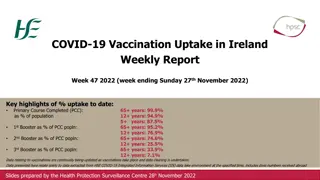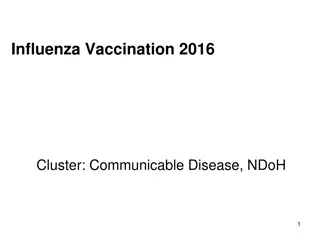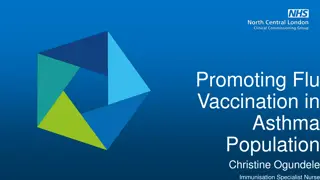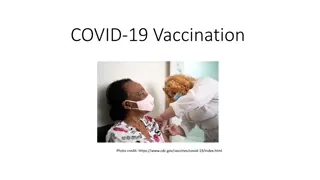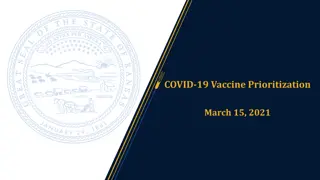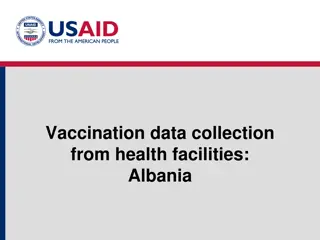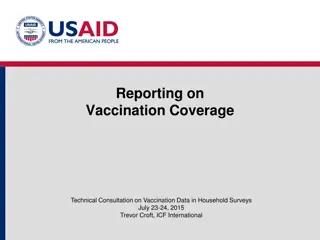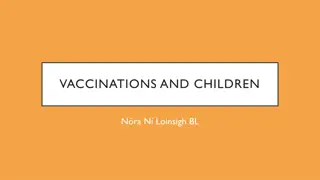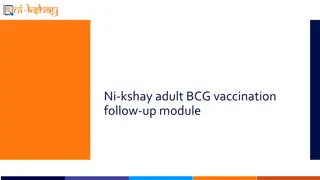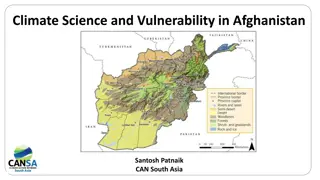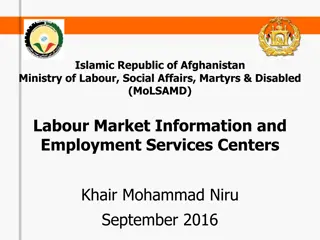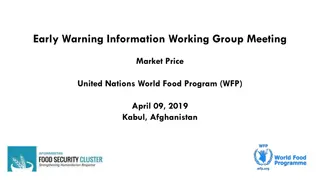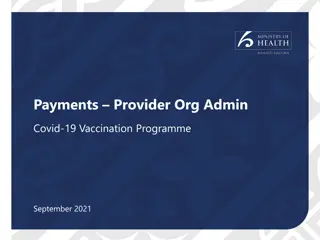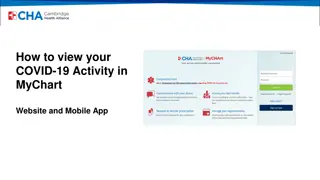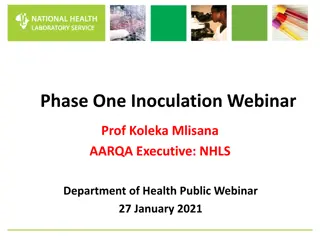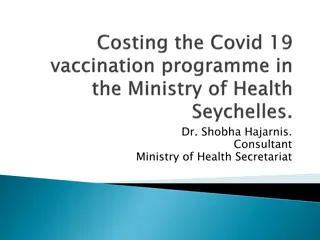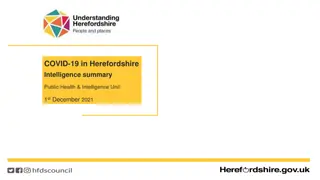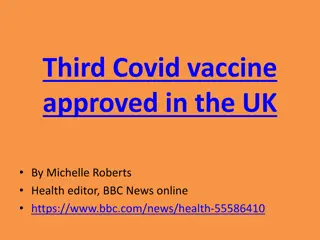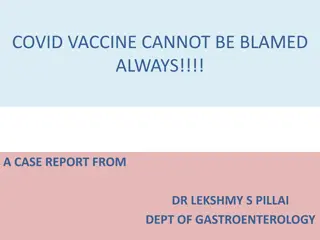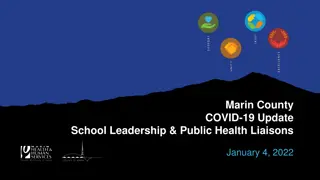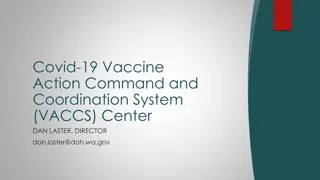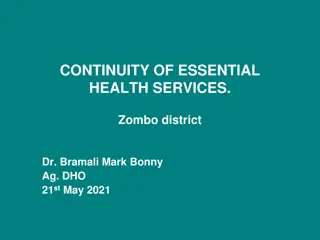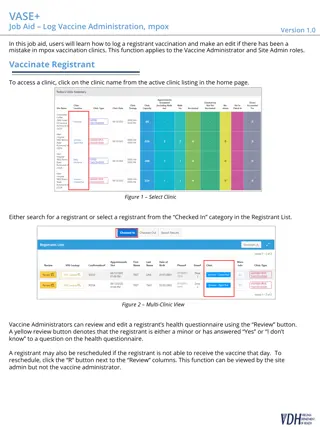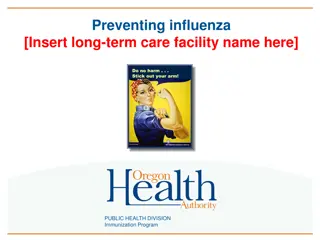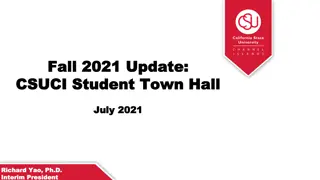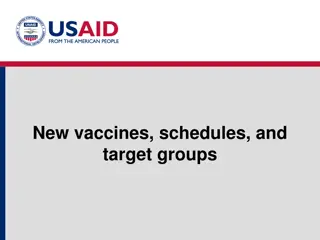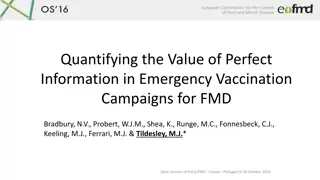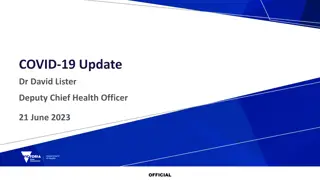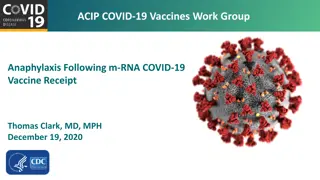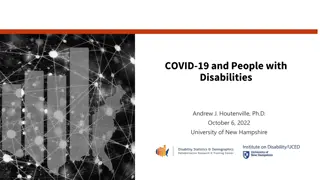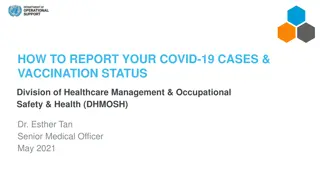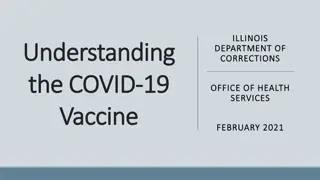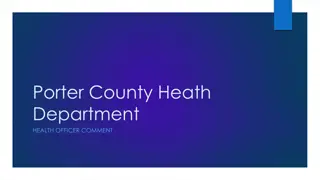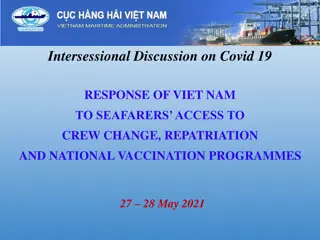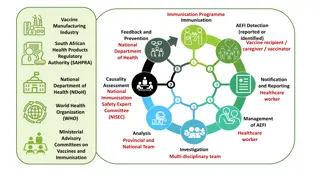Progress in COVID-19 Vaccination Efforts in Afghanistan
The International Organization for Migration (IOM) has been actively involved in COVID-19 vaccination activities in Afghanistan. Key achievements include vaccinating over 278,000 individuals, reaching vulnerable populations, and providing essential health services to over 255,000 people. The focus has been on communities such as returnee Afghans, internally displaced persons, and hard-to-reach areas. Mobile health teams, rapid response teams, and COVID-19 hospitals have played a crucial role in these efforts.
Download Presentation

Please find below an Image/Link to download the presentation.
The content on the website is provided AS IS for your information and personal use only. It may not be sold, licensed, or shared on other websites without obtaining consent from the author. Download presentation by click this link. If you encounter any issues during the download, it is possible that the publisher has removed the file from their server.
E N D
Presentation Transcript
IOM COVID-19 vaccination in Afghanistan- reflections Alice Wimmer, IOM Senior Migration Health Officer with special thanks to the Afghanistan IOM Migration Health Unit
Migration Health key figures (2021) Over 600,000 Afghans screened for TB Over 255,000 people assisted with essential health services 19 mobile health teams , 50 Rapid Response teams and 4 COVID-19 hospitals Almost 31,000 women & girls provided with reproductive health services Over 1,200,000 Afghans reached with health education Nearly 35,000 psychosocial consultations Over 1,600,000 screened for COVID-19
Migration Health Unit Operational Map Migration Health Unit Operational Map
In coordination with MOPH, IOM implementing COVID-19 vaccination activities since October 2021 in 12 Provinces Activities: Administration of the COVID -19 vaccine via 42 vaccinators linked to 19 mobile health teams o via implementing partners running COVID-19 hospitals linked to outreach vaccinators o mainly J&J, AZ and Sinopharm vaccines o RCCE Populations of concern: Returnee Afghans Internally Displaced Persons (IDPs) Person residing in hard-to-reach communities Underserved host communities.
Main Achievement (October 2021 to 20 April 2022) 278,930 people vaccinated MHTs 76,426 IPs 202,504 o o Fully vaccinated person are considered to have received single dose of J&J, or two doses of AstraZeneca & Sinopharm
Main Achievement (October 2021 to 20 April 2022) cont. RCCE reached 2,236,675 vulnerable people Prisoners received vaccine doses Female 458,046
What worked well, as we know it MHT to reach last mile/ remote locations Local IPs, facilitated the activities in location where IOM MHTs had limited/no access (Helmand province) Female vaccinators and male vaccinators RCCE messages were integrated in the normal health education session
The dj-vue challenges Shortage of vaccines availability in the country Short shelf life of supplied vaccines (3 -4 months) and weak supply chain management Hesitance: wrong information/misconception towards the COVID-19 vaccine at community levels (around fertility, growth of fetus, newborn or child, death of adult ) Security incidents Sporadic difficulties of female staff to access their workplaces
Other challenges & food for thought Geographical and seasonal situations (snow/flooding) contributed to reduce access to populations and/or health centers (NB : shelf life!) High mobility of the targeted beneficiaries ? IOM staff/ IPs were not always able to track people for 2nd dose ? Forecasting/ planning taking other factors into account, enabling also rapid reaction to supply/ demand fluctuations linked to: weather, seasonal (labour) migration insecurities ? IOM MoRIA approach, expansion to additional hard-to-reach areas and major mobility corridors
Mobility centered Routine Immunization Approach (MoRIA) Framework to increase route immunization coverage and essential health care services among migrants and mobile populations Objective: to reach more children/ adults in underserved communities, remote locations, along mobility corridors and thus increase global immunization coverage This brings together IOM s comparative advantage in the field of Health and DTM Aims to complement traditional vaccination programming methods with Population Mobility Mapping (PMM) PMM is used to characterize mobility patterns, population distribution, spaces of vulnerability (SoV), health facilities and mobility corridors which are overlayed with vaccination coverage data Targeted population: Migrant population within the corridors Returnees, refugees and displaced populations Nomads (seasonal and others) Long distance travelers ? priority areas for intensified and adapted vaccination activities, particularly in difficult-to-reach areas.


